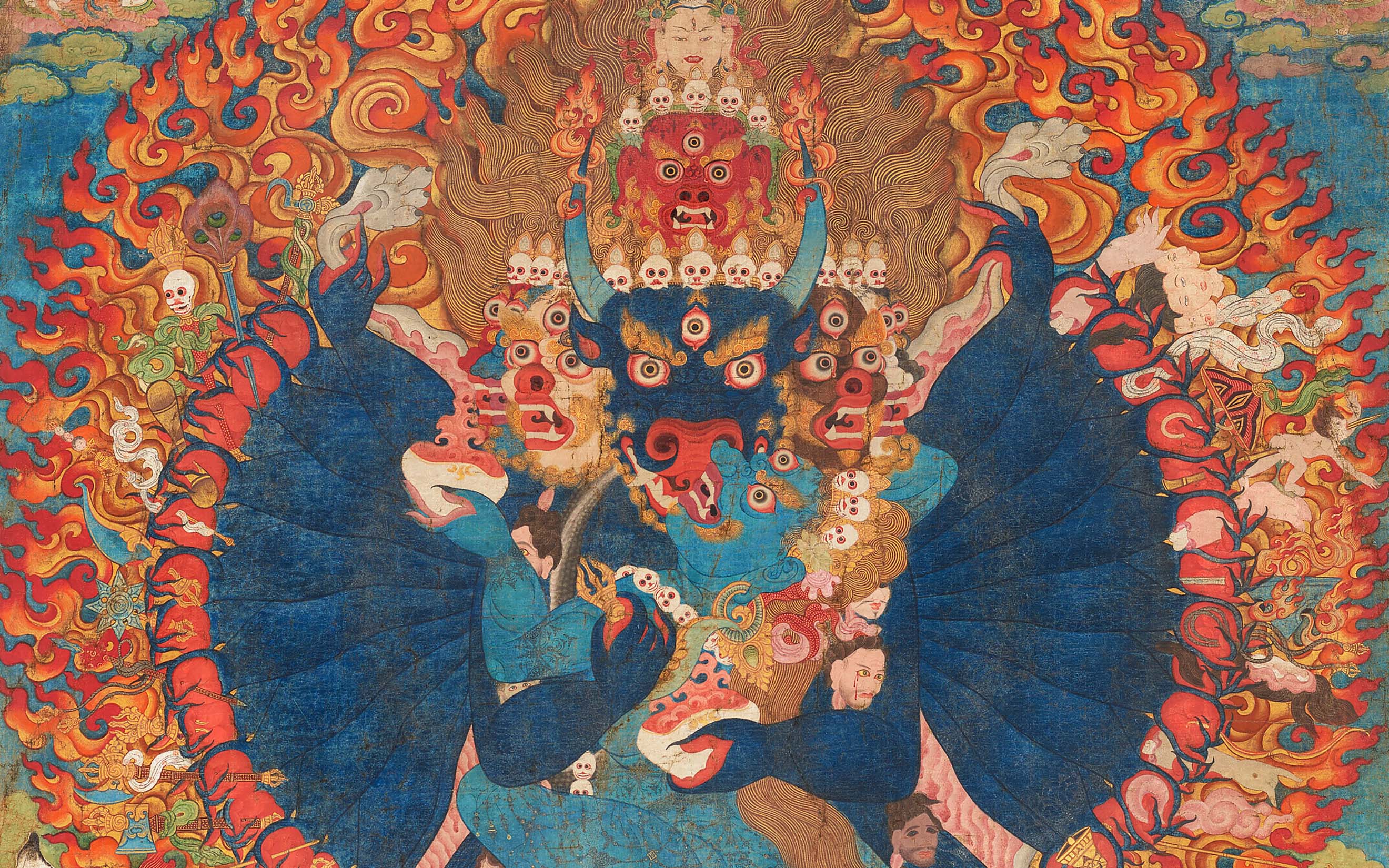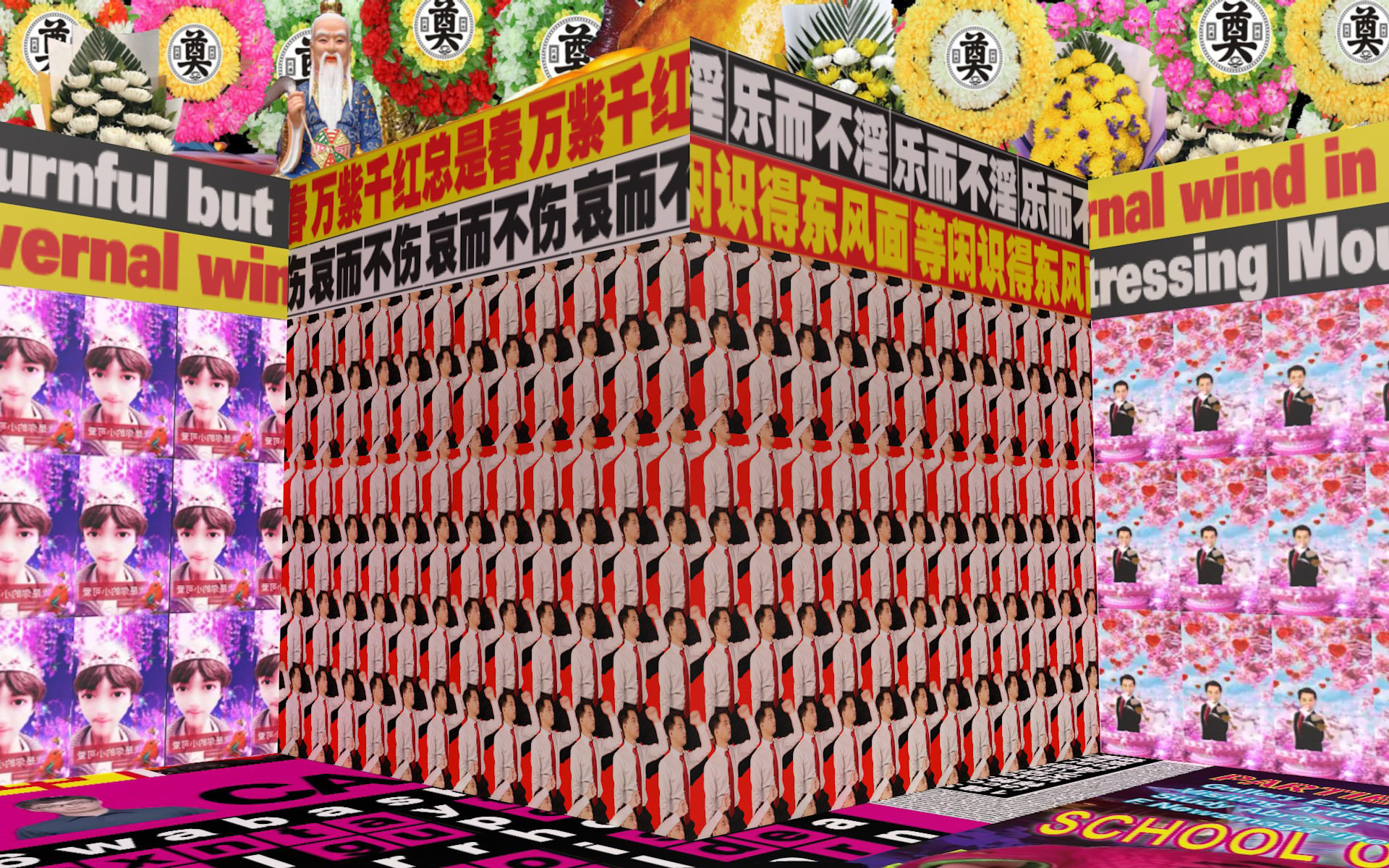Though she was born and raised in Urumqi, capital of China’s remote, northwestern Xinjiang region, Hailun Ma had an early inkling that life would take her to grander cultural centers. Developing an interest in and aptitude for photography by taking a series of stylized self-portraits in her youth, Ma convinced her parents to send her to formally study the field, and after high school she headed to New York City, where she earned her undergraduate and Master’s degrees in fashion photography.
She currently lives in Shanghai, another first-tier, cosmopolitan center for art and fashion, but her most widely acclaimed series to date brings her back to her roots: Hometown, a collection of portraits showcasing the dazzling personal styles of residents of her hometown, and in particular the Uyghur ethnic minority.

While photographs of Xinjiang’s Uyghur population have become a flashpoint for discussions of human rights in recent months, Ma hopes to add more nuance to the wider world’s understanding of Urumqi and Uyghur culture from the perspective of street-level fashion. “My hometown is so different from New York City, even from most other cities in China,” she says, adding: “I want people to know this place and love it as I do, to feel it as I feel. And that’s also what photography means to me — to share a memory, share a new place, a culture, a lifestyle, or even a piece of clothing.”
Read on to learn how Ma has drawn unlikely connections from New York and Shanghai back to the rural reality she grew up with:

From Hailun Ma’s Hometown series (courtesy the artist)
RADII: You’re from Xinjiang originally, right? Where exactly? What was your life like growing up?
Hailun Ma: Yes, I was born and raised in Urumqi, the capital of Xinjiang Uyghur autonomous region. Though Urumqi is a modern city, but for some reason, lots of my childhood memories are related to running around in an open field. My family loves nature, and they encouraged me to spend more time playing outside. In the summer, they often took me to a nearby mountain area — I would ride horses there, and got close with nature. Behind my family house was a small wooded area, I used to climb trees a lot, and I even had a little “farm” with three chickens as pets. I’d dream about becoming either an explorer or an artist one day.
https://www.instagram.com/p/BoukRVql4lC/?hl=en&taken-by=hailunma
How did you first get started with photography? Did your parents support you in this, and did you have access to resources to study it in Xinjiang?
Beside playing outside, I have always been an artsy kid. I loved doodling and drawing — I knew I wanted to do something related to art and creativity when I grew up. At first, a camera was like a toy to me, I was taking pictures because I thought it was fun. I started with taking pictures of myself — I used to put my camera on the top of books and set a timer, and I would play dress up and act in front of the camera as different characters. Then I just fall in love with it.
Later, I decided photography is what I like, and I went to the School of Visual Arts [in New York] and studied photography. I am fortunate enough to have both of my parents be very supportive and open-minded, they are the first people I would show my work to and I really valued their feedback. Even though they might know little about art, they often have an interesting point of view.
https://www.instagram.com/p/Bcn0Z1Cgeim/?taken-by=hailunma
There was no art industry in Xinjiang when I was growing up. In school, it was not a mainstream subject. Outside school, we only had one or two galleries that barely updated. [Art] is overlooked in a small city like Urumqi. I did not realize how sad it was until I moved away to New York City when I was 18. I remembered when I went to the Metropolitan Museum for the first time, I was stunned — it was the first time that I felt little bit of envy toward people who come from a big city, because they have such amazing access so easily.
What were some important Chinese influences on your photographic style when you were first starting out? Foreign influences?
Growing up, I would have my picture taken in a photo studio for every birthday, dressed up in different themed outfits and in front of various backgrounds. Now it feels almost like cosplay. The photos are called YiShuZhao, a very popular form of photography in China. That was my first encounter with photography, and I have been fascinated and inspired by those photos. I also used to have a copy of the painting Infanta Margarita Teresa in a Blue Dress hanging on my bedroom wall, and it would be the first thing I saw when I woke up every morning for over ten years, until we moved.
https://www.instagram.com/p/Be2TalVgh1k/?taken-by=hailunma
How has your time living, studying and working in New York changed or shaped you as an artist?
When I was in my second year of high school, and I hadn’t yet started to shoot — you know, when you are young, you have this image inside of your mind of someone you want to be. For me this image was me as this young, up-and-coming fashion photographer, hanging out with her model friends, taking pictures inside of her New York City loft. Haha… As stupid as this may sound, I still don’t know where this idea came from, is it a scene from a movie or a picture I saw on a poster? But I knew I wanted to be that. So I had a discussion with my parents one day, and told them about dropping out of high school and studying photography, and my parents told me I had to finish high school first and then they’d send me to New York to study photography. I kept my promise, studied really hard, and they kept theirs.
https://www.instagram.com/p/BfoQ_p_g9KH/?taken-by=hailunma
New York City is truly an amazing place — it’s like my second hometown now. It is really hard to say in detail how the experience has shaped me. It really opened my eyes and mind, let me believe in my own voice. It is just such great city to be inspired by, to live in and create work.
Much of your work is concerned with fashion — both the stylized world of high fashion, and more colorful, street-level portraits of fashion in places (like your hometown) well removed from global cultural capitals. What about fashion appeals to you as a subject?
While I was in my Master’s degree program studying fashion photography, I started to have some confusion, and reflect on the medium of fashion photography. Part of me really loved fashion styling, and how amazing fashion photography is as a platform to show my aesthetic and my vision. But another part of me, being a small town girl from Xinjiang, felt less connected.

From Hailun Ma’s Hometown series (courtesy the artist)
High fashion, as most people know, is far away from life in Xinjiang, but I remembered [from my youth that] everyone has amazing style. Growing up, I was fascinated with how colorful and vibrant Uyghur traditional clothing is, how they mixed and matched their outfits, and how they understood trends and styles. I would love to recreate that, and by doing this series I hoped to find that connection between fashion and myself.
Moreover, it has been my passion to introduce my homeland to others. My hometown is so different from New York City, even from most other cities in China. I want people to know this place and love it as I do, to feel it as I feel. And that’s also what photography means to me — to share a memory, share a new place, a culture, a lifestyle, or even a piece of clothing.
I’m also interested in a series of self-portraits you’ve done, stylizing your face in a format that looks to my eye reminiscent of medieval Western oil painting, religious icons in particular. What is your aesthetic goal with this series? Can you talk a bit about where you’re coming from here?
When I was in NYC, I loved to go to museums. The Met was my favorite to visit. I loved to spend whole days just looking at the Renaissance paintings — I love how beautifully lit the subjects are in those paintings, and I’m fascinated by their fashion style and interested in it as a metaphor. So I referenced the pictorial conventions of portraits from Western art, and combined them with my Chinese background to create a dream world exploring topics that interested me at that time, such as beauty standards, female roles, class and power.
https://www.instagram.com/p/BDO3OTPNAo2/?hl=en&taken-by=hailunma
What other themes, topics, or series do you explore in your work, or plan to cover in the future?
I love playing The Sims, I spend so much time in that game, just to build a house and a character rather than play it. I am interested in the idea of creating a world and characters [in it]. One day I realized the way I play the game is really like my approach to photography. So I did a series using the game’s built-in camera, and “took pictures” of things, people I saw in this virtual space. It provides a virtual space, and I could use it to help me manifest ideas without worrying about the limited resources I have in real life.

From Hailun Ma’s series, The Sims
Moreover, the game itself is really interesting and profound. It simulates our everyday lifestyle and the basis of society. And it gives freedom to players, making them designers of their own world in the game. Their way of playing the game reflects their own characters, ideologies, and even subconscious behavior.
I’m also interested in kawaii [“cuteness”] culture in East Asia — I would love to go to Japan to get some inspiration.
You currently split your time between New York and Shanghai, is that right? How much time do you spend in each place? What similarities and differences do you feel between these two cities, in terms of their culture and the opportunities they provide for you professionally and creatively?
Currently I am living in Shanghai, and I go back New York only for work or visits. I think Shanghai and New York City are both very exciting places to live, especially for young artists. Because I am Chinese, I find that Shanghai is easier for me to break in to. However, I do miss New York, some resources are easier to access when you’re there.
https://www.instagram.com/p/BfqJMnFgLnP/?hl=en&taken-by=hailunma
Having spent the last few years of your professional life in these two cosmopolitan places, have you felt a draw to return to Xinjiang, or to explore a less “developed” center in which to expand your art?
Yes, of course. Living in the big city is exhausting sometimes. I need to have a getaway trip sometimes. For me, Xinjiang is like one big, on-going project, and I will always be inspired by my hometown. Growing up in a multi-cultural environment, I am naturally drawn to different ethnic groups and sub-cultures. I would love to shoot different people of different ethnicities and get to know their culture a little bit more, and still combine fashion elements with travel, culture and lifestyle.
What are you working on now? Anything else you want to add?
I am planning to go back to Xinjiang soon with my friend to shoot a group of Uyghur female soccer players — I’m super excited.
—
Cover image from Hailun Ma’s Hometown series (courtesy the artist)
















